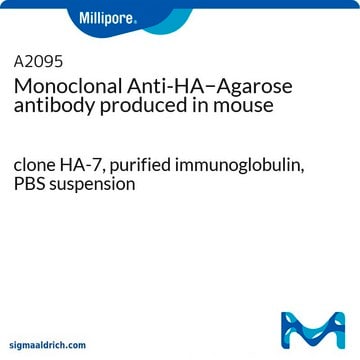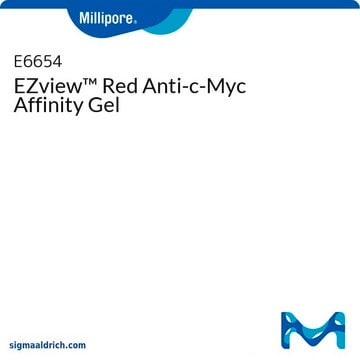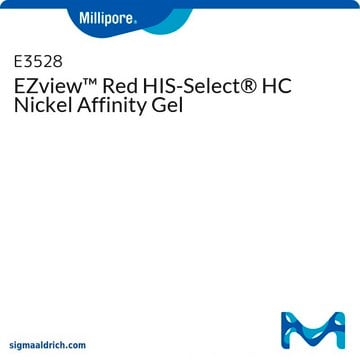E6779
EZview™ Red Anti-HA Affinity Gel
Sinónimos:
Anti-HA
About This Item
Productos recomendados
shelf life
1 yr at 2‑8 °C
analyte chemical class(es)
proteins (hemagglutinin)
technique(s)
affinity chromatography: suitable
immunoprecipitation (IP): suitable
matrix
crosslinked agarose
capacity
≥0.4 mg/mL, gel binding capacity (HA-tagged fusion protein)
storage temp.
2-8°C
Categorías relacionadas
General description
Specificity
Application
Features and Benefits
- Increased visibility - Red color reduces risk of incidental aspiration
- Improved recovery of target protein by reduced accidental loss
- Higher reproducibility - More consistent yields
Other Notes
Physical form
Legal Information
related product
Storage Class
10 - Combustible liquids
wgk_germany
WGK 3
flash_point_f
Not applicable
flash_point_c
Not applicable
Certificados de análisis (COA)
Busque Certificados de análisis (COA) introduciendo el número de lote del producto. Los números de lote se encuentran en la etiqueta del producto después de las palabras «Lot» o «Batch»
¿Ya tiene este producto?
Encuentre la documentación para los productos que ha comprado recientemente en la Biblioteca de documentos.
Los clientes también vieron
Contenido relacionado
Tecnologías de expresión proteica para expresar proteínas recombinantes en sistemas de expresión de E. coli, insectos, levaduras y mamíferos destinadas a la investigación fundamental y al apoyo a la producción de tratamientos y vacunas.
Protein expression technologies for various expression systems supporting research, therapeutics, and vaccine production.
Nuestro equipo de científicos tiene experiencia en todas las áreas de investigación: Ciencias de la vida, Ciencia de los materiales, Síntesis química, Cromatografía, Analítica y muchas otras.
Póngase en contacto con el Servicio técnico














